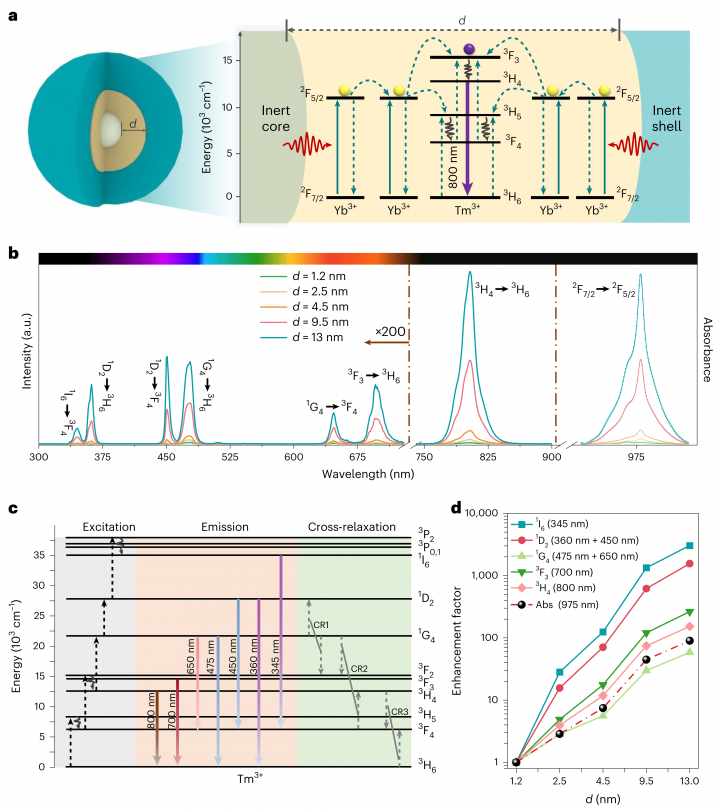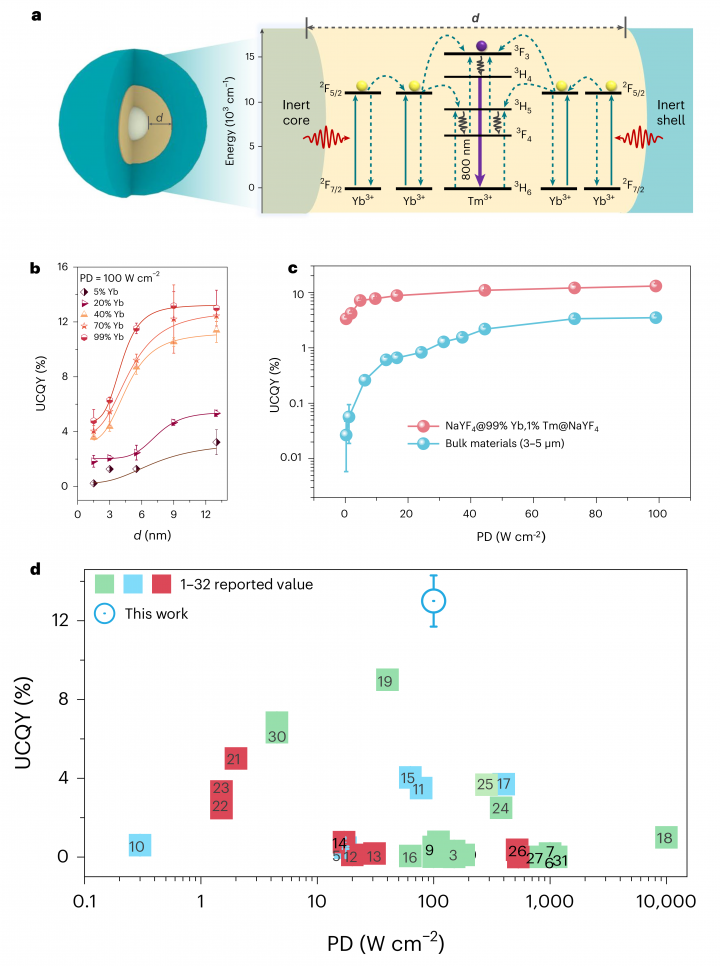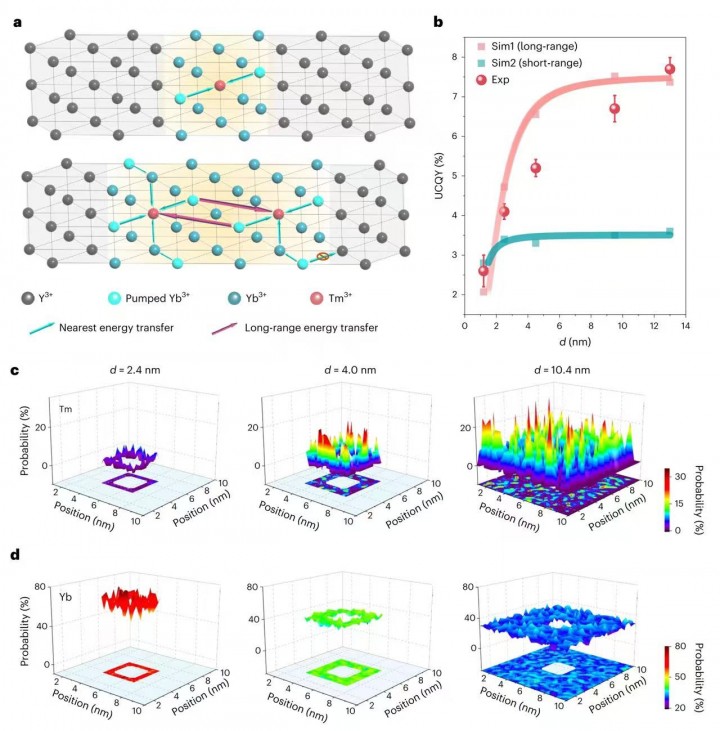Researchers from the School of Chemical Engineering and Technology at Harbin Institute of Technology, led by Professor Guanying Chen, have made a breakthrough in the field of upconversion luminescence of lanthanide doped nanoparticles. Their research results, titled Size-Dependent Lanthanide Energy Transfer Amplifies Upconversion Luminescence Quantum Yields, were published in Nature Photonics, changing the traditional understanding of the size effect on upconversion luminescence and providing a new approach for the design of lanthanide-doped luminescent nanoparticles.
Lanthanide-doped upconversion nanoparticles are an emerging class of anti-Stokes luminescent materials with important applications in anti-counterfeiting, biomedicine, microlasers, super-resolution nanoscopy, volumetric displays, and solar cells. However, due to the severe luminescence quenching effects in nanostructures (including defect quenching and size-induced surface quenching), the energy transfer process in the excited state suffers from serious energy dissipation. As a result, the quantum yield of upconversion materials at the nanoscale is typically several orders of magnitude lower (about 10-1000 times) than their bulk counterparts, greatly limiting their related application research. Achieving high quantum yields of upconversion luminescence is of great significance for rare earth luminescence research.
Based on this, the research team led by Professor Guanying Chen constructed hexagonal phase ytterbium- thuliumco-doped fluoride upconversion nanocrystals with a sandwich-like core-shell-shell structure. By utilizing the effective confinement and isolation of the inert materials in the inner core and outer shell layers, and precisely controlling the thickness of the intermediate layer (1.2-13 nm), they demonstrated the size-dependent effect on the upconversion quantum efficiency of this nanoparticles. Spectroscopic studies and theoretical micro-models confirmed that this effect is not related to the traditional surface quenching effect, but is mainly induced by the long-range (10 nm scale) energy transfer process between the lanthanide ions. Ultimately, the team achieved an upconversion quantum yield as high as 13% in sub-50 nm fluoride nanocrystals (laser wavelength: 980 nm, power density: 100 W/cm2), which is about 4 times higher than the micrometer-sized hexagonal phase ytterbium-thulium co-doped bulk counterpart under the same excitation conditions. This upconversion quantum yield is the highest record for upconversion nanoparticles to date.
This study first revealed the physical mechanism of size-dependent long-range energy transfer between rare earth ions in nanocrystals, not only changing the long-held concept of the physical picture of energy transfer between lanthanide ions (which should not have size dependence), but the related materials will also play an important role in relevant nanophotonics and biophotonics applications. At the same time, the research results achieved a high upconversion quantum yield of up to 13% through control, surpassing the upconversion quantum yield of bulk materials, which breaks long-existing conceptual understanding since the discovery of the upconversion phenomenon in the 1960s that the upconversion luminescence efficiency of nanomaterials is lower than that of bulk materials.



Paper Link: https://www.nature.com/articles/s41566-024-01393-3


